Immigration

President Donald Trump vowed on Thursday to declare a national emergency in an attempt to fund his U.S.-Mexico border wall without congressional approval, a step likely to plunge him into a court battle with Congress over constitutional powers.
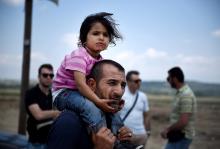
THE DEUTERONOMY PASSAGE that ushers in our Lenten pilgrimage underscores the sacred mandate to embrace foreign immigrants with generous hospitality. Instructions for the liturgy for harvest thanksgiving conclude: “Then you, together with the Levites and the aliens who reside among you, shall celebrate with all the bounty that the Lord your God has given to you” (26:11). Worshippers are required to certify in the assembly before God that they have participated in providing what the vulnerable in society need, not least refugees. “I have removed the sacred portion from the house, and I have given it to the Levites, the resident aliens, the orphans, and the widows” (verse 13). Paul speaks of the Spirit of freedom removing the veil that blinds us to the core meaning of the sacred texts. In the current climate of xenophobia and incitements to make refugees into scapegoats, Christians are called to rip down the veil that prevents people from hearing this Word.
As for the intimate personal dimension or Lenten conversion, this might be the time to realize more profoundly that much of our own sinfulness and confusion arises from the harshness with which each one of us rejects and starves elements of our own inner “community of selves,” those parts of our humanity we try to disclaim and repress. It is the Spirit’s inner work of integration that teaches us to embrace those “selves of the self” we find ugly, pathetic, needy, or too passionate and creative for comfort. Our outer practice and inner practice of hospitality and inclusion belong together.
[ March 3 ]
Radiation Exposure
Exodus 34:29-35; Psalm 99; 2 Corinthians 3:12-4:2; Luke 9:28-43a
“And all of us with unveiled faces, seeing the glory of the Lord as though reflected in a mirror, are being transformed into the same image from one degree of glory to another; for this comes from the Lord, the Spirit” (2 Corinthians 3:18). The Epiphany season’s celebration of the glory of God revealed in the face of Jesus Christ concludes with the theme of transfiguration (metamorphosis is the Greek word). The appointed scriptures are the key for understanding the dynamic of Lent as we prepare to enter that season of renewal. Our transformation can never be accomplished by conforming to external imperatives, nor by the embracing of “values,” however lofty and demanding. Our moral transformation works through contemplation of the open heart of God exposed in the self-giving life of Christ, a kind of contemplation as “radiation therapy” in which our inner falsity is irradiated by the beams of God’s unbounded, costly love, lived out by Jesus through his “exodus” (Luke 9:31) into the cross.
Prayer is the perpetual treatment in which, little by little, we deepen our participation in the divine life of vulnerability, transparency, and truthfulness. “We have renounced the shameful things that one hides; we refuse to practice cunning or to falsify God’s word” (2 Corinthians 4:2), but this is not the result of our own program of moral effort; it rises from “the Lord, the Spirit” doing the work of inner liberation in us while we are steadfastly fixing our gaze on Jesus.
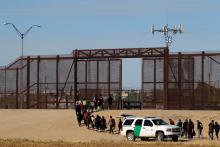
The U.S. government will return the first group of migrants seeking asylum in the United States to the Mexican border city of Tijuana on Friday, U.S. and Mexican officials said, marking the start of a major policy shift by the Trump administration.
The policy, dubbed the Migrant Protection Protocols (MPP) and first announced on Dec. 20, will return migrants, including non-Mexicans, who cross the U.S. southern border back to wait in Mexico while their asylum requests are processed in U.S. immigration courts.

Pope Francis wasted no time wading in on the standoff over funding for a U.S.-Mexico border wall on Wednesday as he started his trip to Panama, saying on the plane from Rome that hostility to immigrants was driven by irrational fear.
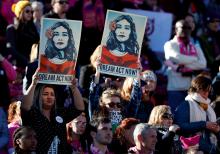
The U.S. Supreme Court temporarily closed the door on President Donald Trump's effort to end protections for hundreds of thousands of undocumented immigrants with the justices again silent on Tuesday on three related appeals.
With the lower court’s ruling against the administration and the high court not yet taking action, the Deferred Action for Childhood Arrivals (DACA) program remains in place for now, essentially maintaining the status quo for current DACA recipients. DACA protects about 700,000 immigrants, often called "Dreamers" based on the name of the Dream Act legislation that failed to pass Congress, from deportation and provides them work permits, though not a path to citizenship.
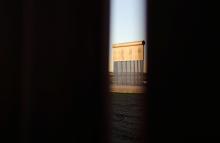
Leaders want to spend billions, not to help people living in desperation, but on the wall. We must ask ourselves, and our elected leaders, what are the true costs when we allow ourselves to be consumed by fear? Are we willing to put the wall ahead of the God of mercy who came to us as a child fleeing violence? Thousands of God’s children remain in the squalor of tent cities in Tijuana and detention centers, unwelcome in Mexico and the United States. Some are returning to violence at home having lost any hope for asylum they are legally entitled to request.
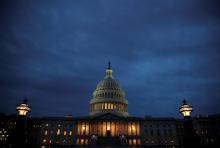
In Donald Trump’s address to the nation last night, meant to emphasize his desire for a physical barrier to close off the southern border, he stated, “Women and children are the biggest victims, by far, of our broken system.” He referenced high rates of sexual assault on the journeys up the southern border and the brutal rape and murder of a California resident by an undocumented immigrant and a U.S. citizen (though he failed to highlight the ladder assailant). I agree with Trump that women and children are the biggest victims of the broken system, though not in all the ways that he had in mind.

First, racism is always based on lies; it always has been and always will be. We saw that again in Donald Trump’s address to the nation on Tuesday. It was more of the same lies he has used since he announced his presidential candidacy in 2015. He used his lies last night to try to justify his border wall, the signature issue of his political campaign and administration, which people on both sides of the aisle have said has nothing to do with border security and everything to do with Donald Trump’s central message: You should fear people who aren’t white. The wall would be Donald Trump’s 2,200-mile monument to white supremacy. As I have said before, in Trump’s political campaign he become the Chief Tempter of America’s Original Sin. Now as president, he has become the Chief Defender of America’s Original Sin.

Pope Francis warned on Monday against a resurgence of nationalist and populist movements and criticized countries that try to solve the migration crisis with unilateral or isolationist actions.
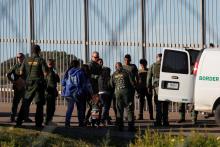
“God created mankind in his own image, in the image of God he created them; male and female he created them.” —Genesis 1:27 NIV
But we have too often used language that denies the truth that each immigrant — regardless of their country of origin, legal status, ethnicity, religion, or any other qualifier — is a person made in your image, with inherent dignity and potential.
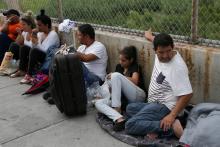
A U.S. judge struck down Trump administration policies aimed at restricting asylum claims by people citing gang or domestic violence in their home countries and ordered the U.S. government to bring back six deported migrants to reconsider their cases.
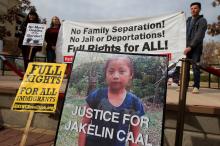
U.S. Border Patrol agents who detained a 7-year-old Guatemalan migrant girl who later died in federal custody will not speak with U.S. lawmakers investigating her death, the U.S. Department of Homeland Security said on Monday, citing their union membership.
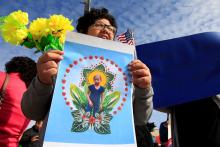
Twelve days before Christmas, 7-year-old Jakelin Amei Rosmery Caal Maquin died from dehydration eight hours after she was apprehended by border patrol. While this is a horrible tragedy, the harrowing truth is that that her death (and the deaths of many other migrants) is the logical outcome of our nation’s immigration policy decisions. According to an unclassified government report obtained by ABC News, Maquin’s death appears to have been one of four people who died this crossing the border month, and one of more than 260 this year.

Anything can label itself as being “Christian,” so we must always look to the person of Christ to guide us, because he already laid out a life for us that perfectly reflects what it means to be God incarnate on earth. Christ is everything.
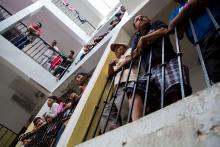
Migrant people hold the now and the not yet in tension. In the midst of waiting to make it up north and taking their turn for a credible fear interview at the border, life continues. People find ways to feel alive, to keep hope alive. At La Casa del Peregrino, holding on to hope looked like doing karaoke, coloring banners, and making beaded bracelets. They were not devoid of life.
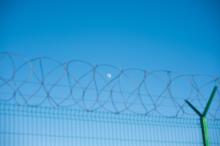
The group, called Shut Tornillo Down Coalition, says that the center adds to the abuse of vulnerable children by imprisoning them and separating them from their families and causes them deep harm by compounding on already existent trauma.
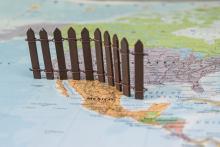
Lee: I would like faith communities to stretch themselves. We are being called to stretch. So much is being tested and contested in our political world and in the world that we're living. Some faith communities are feeling it very directly and some may be insulated from it, but I think our invitation to faith communities is to be willing to take some leaps of faith and to step off the curb. Get out of our comfort zones. These are extraordinary times and we're going to have to push ourselves to respond to these extraordinary times with equal measure. That’s going to mean trying things we haven't done before.
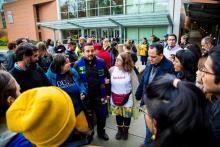
The space of Samuel Oliver-Bruno’s “home” while in sanctuary is filled with signs he thought he’d return from a biometrics appointment at U.S. Customs and Immigration Services (USCIS) in Morrisville, N.C., scheduled at the immigration control office’s request. His work on construction projects around the basement at the CityWell church in Durham, N.C., seems stalled in time. Painting supplies, clothes, other personal items stilled exactly as he left them, where he was working diligently just days before his life was altered irrevocably. A prayer room he helped to build is silent.
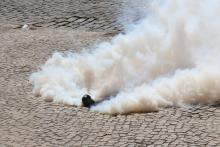
When I was in the police academy, each of us recruits were sprayed point-blank in the face with oleoresin capsicum (OC), a cayenne pepper-based spray. This was done for two reasons: first, this experience would help us to know what it feels like when we use it on someone so that we would use it only when truly necessary; second, in case we ever were sprayed unintentionally, we had to still find our radio or a way to safety. Indeed, I’ll never forget the excruciating burning sensation and excessive mucus that put me out of commission for much of the rest of the day.
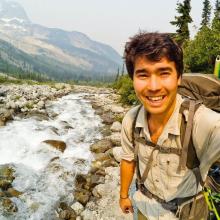
Last week, the world was introduced to John Allen Chau, the U.S. American “adventurer” and missionary who was killed by an indigenous group on North Sentinel Island. According to a statement from missionary organization All Nations, Chau was a “seasoned traveler who was well-versed in cross-cultural issues” and had “previously taken part in missions projects in Iraq, Kurdistan and South Africa.” Now, Indian police have begun the dangerous mission of trying to recover the body even though a tribal rights group has urged officials to call off the search, claiming it puts them and the indigenous group in danger.